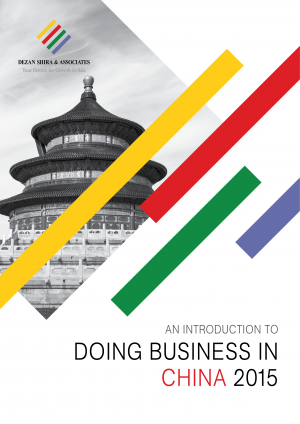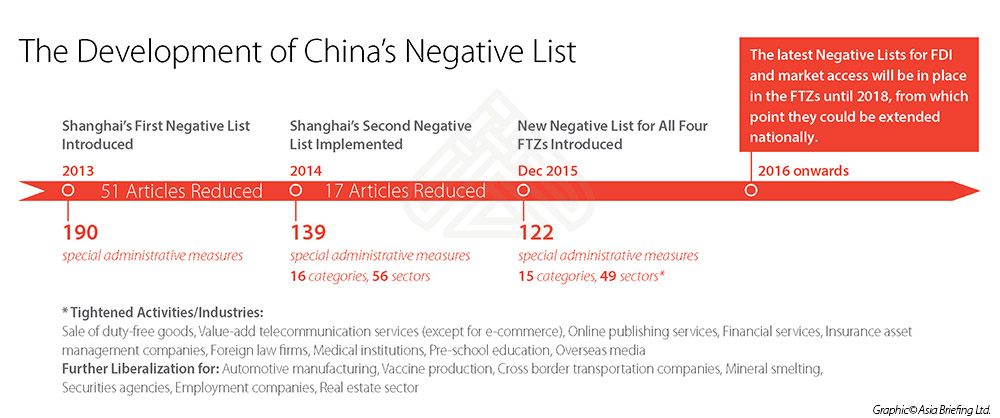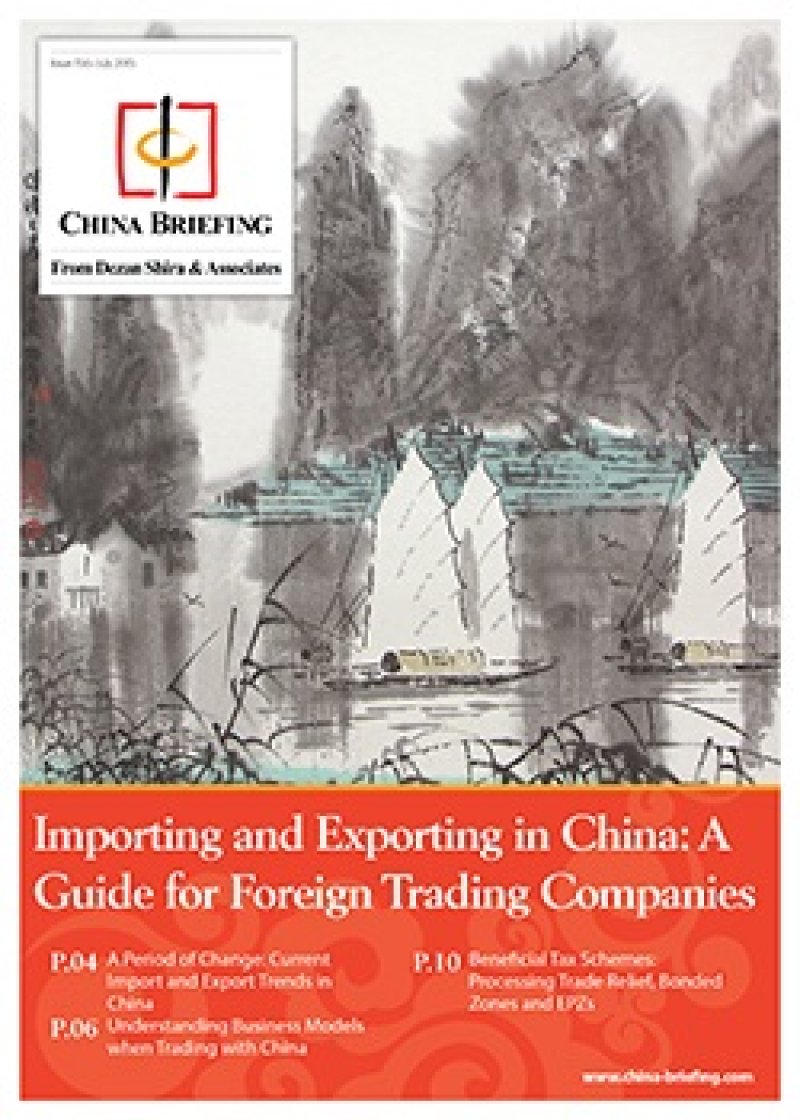Navigating China’s FTZs: Market Access, Tax Systems and Registration Procedures, Part 1
By Dezan Shira & Associates
Editors: Nathan Wakelin-King and Qian Zhou
While China’s FTZs are regulated by many similar policies, important technical distinctions exist between the four zones. For example, corporate income tax (CIT) and individual income tax (IIT) is structured differently across the FTZs, and Shanghai and Tianjin treat cross border RMB cash pooling differently. Moreover, despite a widely liberalized system for foreign direct investment, there are certain restrictions and incentives across the four zones that investors should be aware of.
Reduced Market Access Restrictions on Foreign Investment
The Free Trade Zones use a “Negative List” for foreign investment that stipulates in which industries foreign companies cannot invest. For industries not included in the Negative List, foreign investment is no longer required to go through the “approval” process. Instead, a more efficient “filing” system is applied.
The Negative List was initially introduced in 2013 alongside the creation of the Shanghai FTZ and has since been updated twice, most recently in May 2015. Long and at times extremely specific, the Negative List may ostensibly give the impression that China’s FTZs are overly restrictive on foreign investment. However, while there are a number of areas that remain closed, many more have been opened up to FDI and provide attractive opportunities for investors.
![]() RELATED: Business Advisory Services from Dezan Shira & Associates
RELATED: Business Advisory Services from Dezan Shira & Associates
Manufacturing
The manufacturing sector received a significant overhaul across all of China’s FTZs in the latest Negative List. Here, we detail how investment is treated in some of the country’s most popular industries:
- Automotive manufacturing: Automobiles fall under the “restricted” category: the shareholding percentage of the Chinese partner should not fall below 50 percent. Further, a foreign investor may establish no more than two joint venture enterprises in China to manufacture the same types of vehicles (however, this restriction does not apply in the case of a merger or acquisition of another vehicle manufacturer).
- Aeronautical design / manufacturing: Depending on the type of aircraft, the business venture must be in the form of an equity joint venture or a cooperative joint venture, in some cases with the controlling stake held by the Chinese party.
- Rail transportation: Manufacturing of railway transportation equipment is limited to equity joint ventures or cooperative joint ventures. However, the FTZs allow for 100 percent ownership in certain areas of railway equipment development and manufacturing. These include the R&D and manufacturing of passenger service facilities and ancillary equipment. It also includes the R&D and manufacturing of equipment related to tracks and bridges. Equipment manufacturing for electric railway systems and equipment can be wholly foreign owned. For urban transit projects, 70 percent of equipment used must be from China.
Shipping
For the operation of international vessel agency operations, restrictions on foreign investment have loosened somewhat: foreign entities are allowed a 51 percent equity stake in such a venture if it is located in an FTZ. Previously, a Chinese controller was required. It is important to note, however, that foreign entities are still blocked from any sort of domestic shipping operations.
Wholesale and Retail
Wholly Foreign Owned e-commerce operations are permitted, including online data processing and trading processing operations. This small but significant change is new in the 2015 list; previous lists had equity restrictions.
Overall, the significance of the FTZs to potential wholesale or retail businesses are less related to changes in investment laws, and more related to other aspects of the FTZs, such as simplified customs procedures and other administrative procedures.
Finance
Overseas investors in banking institutions in China’s FTZs must themselves be financial institutions. The 2015 negative list specifies what varieties of foreign financial institution can invest in what variety of FTZ financial institution. In some cases, they require the investor to be the same type of institution. For example, investors in rural credit banks must themselves be rural credit banks, and investors in currency brokerage companies must be currency brokerage companies.
Most other financial services remain in the “restricted” category: that is, there are openings for foreign investors, but there are either limitations on the proportion of foreign equity, or restrictions on specific types of foreign investment.
Professional Services
Telecommunications services have changed significantly with the revisions of the negative lists. As written above, e-commerce firms can be wholly foreign owned within an FTZ. For value-added telecommunication services, foreign investors are allowed up to a 51 percent equity (in the 2013 negative list, a Chinese partner with a majority share was required).
![]() RELATED: Navigating China’s FTZs, Part 2
RELATED: Navigating China’s FTZs, Part 2
Accounting firms require that the managing partner be a Chinese national. As elsewhere, foreign law firms must enter China in the form of a representative organization.
Medical institutions can be set up as wholly foreign owned entities, but investors must have five or more years of experience in medical institution investment and administration, among other requirements. The minimum total investment is 20 million RMB.
 This article is an excerpt from the January and February issue of China Briefing Magazine, titled “A Guide to China’s Free Trade Zones.” In this issue of China Briefing magazine, we examine China’s four Free Trade Zones and discuss the differences and strengths that exist in each of them. We begin by providing an introduction to the FTZs, and then take an in-depth look at the market access conditions, registration procedures and tax environments of each. Finally, we highlight some of the key considerations that foreign companies should be aware of when choosing an FTZ to invest in. This article is an excerpt from the January and February issue of China Briefing Magazine, titled “A Guide to China’s Free Trade Zones.” In this issue of China Briefing magazine, we examine China’s four Free Trade Zones and discuss the differences and strengths that exist in each of them. We begin by providing an introduction to the FTZs, and then take an in-depth look at the market access conditions, registration procedures and tax environments of each. Finally, we highlight some of the key considerations that foreign companies should be aware of when choosing an FTZ to invest in. |
![]()
 An Introduction to Doing Business in China 2015
An Introduction to Doing Business in China 2015
Doing Business in China 2015 is designed to introduce the fundamentals of investing in China. Compiled by the professionals at Dezan Shira & Associates, this comprehensive guide is ideal not only for businesses looking to enter the Chinese market, but also for companies that already have a presence here and want to keep up-to-date with the most recent and relevant policy changes.
 Selling, Sourcing and E-Commerce in China 2016 (First Edition)
Selling, Sourcing and E-Commerce in China 2016 (First Edition)
This guide, produced in collaboration with the experts at Dezan Shira & Associates, provides a comprehensive analysis of all these aspects of commerce in China. It discusses how foreign companies can best go about sourcing products from China; how foreign retailers can set up operations on the ground to sell directly to the country’s massive consumer class; and finally details how foreign enterprises can access China’s lucrative yet ostensibly complex e-commerce market.
Importing and Exporting in China: a Guide for Trading Companies
In this issue of China Briefing, we discuss the latest import and export trends in China, and analyze the ways in which a foreign company in China can properly prepare for the import/export process. With import taxes and duties adding a significant cost burden, we explain how this system works in China, and highlight some of the tax incentives that the Chinese government has put in place to help stimulate trade.
- Previous Article Steuerliche Aspekte für Software-Geschäfte in China
- Next Article Weathering the Storm: Finding Opportunities in China during its Economic Slowdown











